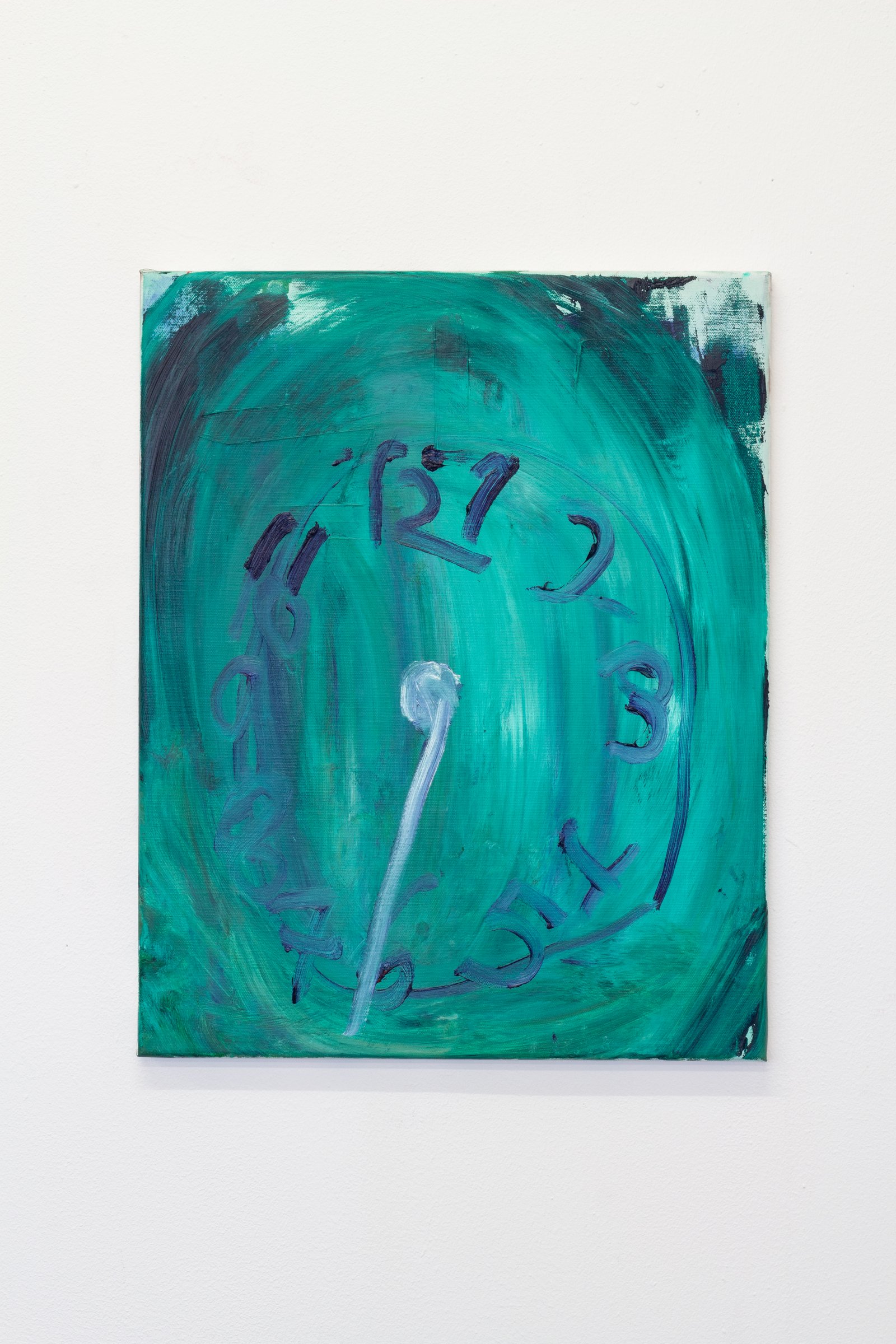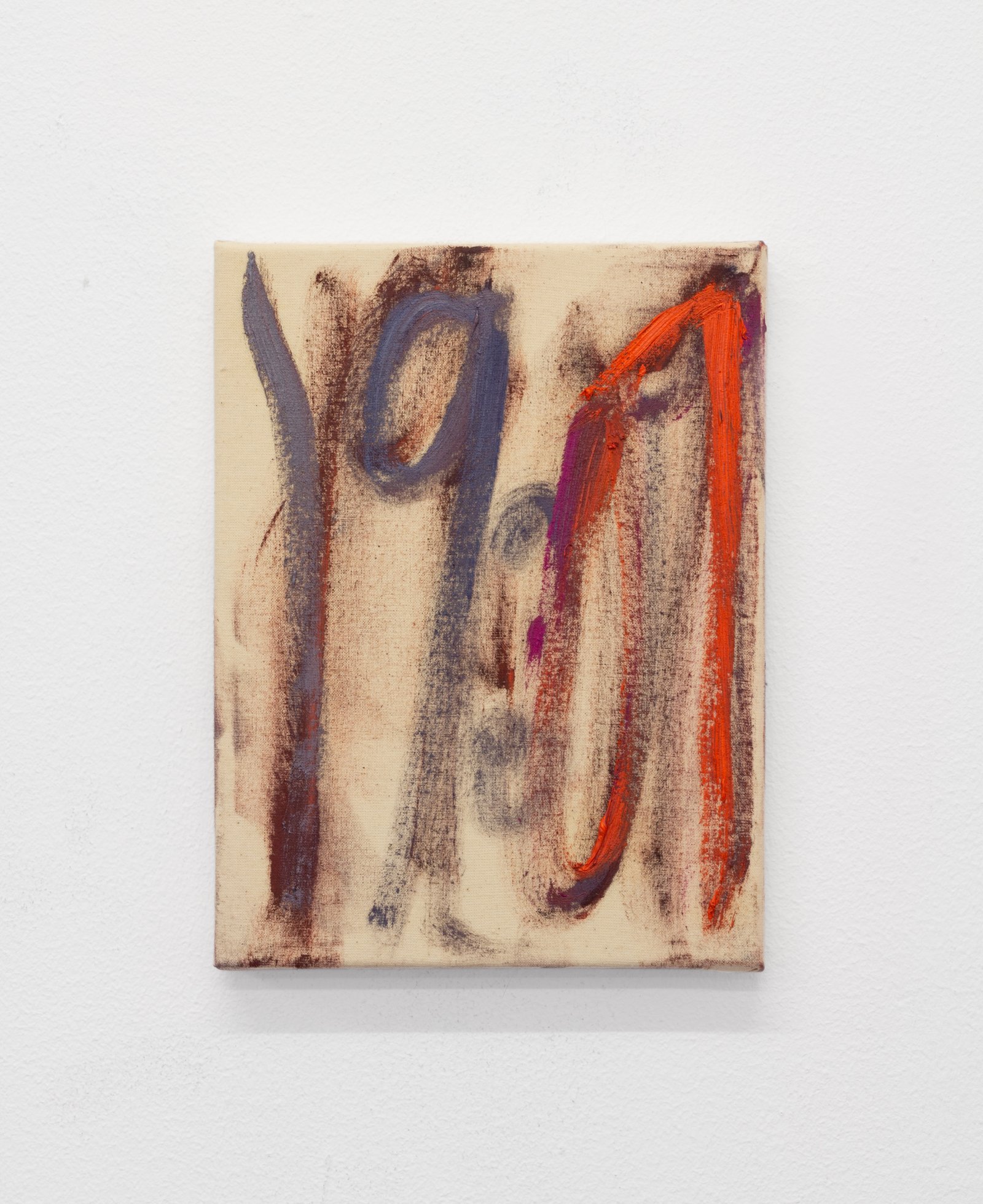Magnus Frederik Clausen, painting as time goes by
By painting time Magnus Frederik Clausen suggests a procession of memorable moments, in the course of an ordinary day.
The first time you remove the training wheels from your bike, the first walk to school unaccompanied, the first time driving a car, the first kiss, the first loss of a loved one—these are all blind dates with fate. No one knows when they will arrive, but at some point, they do. A random moment pinned to the timeline of life acquires new significance, marking an anniversary nobody anticipated–but here it is, as long as you remember it well.
Between 2020 and 2021, Magnus Frederik Clausen taught his oldest son how to read the time on the clock. Thanks to this somewhat accidental, somewhat deliberate circumstance of parenting, the artist began reflecting on the process of translating and oscillating between one system of codes and another. More precisely, Clausen started to swing from an analogic system to a digital one and the other way around, developing a series of paintings depicting clocks, which he has kept investigating until the present day, unpacking its manifold implications.

By commissioning the making of clockworks to assistants, Magnus Frederik acts as a storyteller, drafting the scripts of a narrative. Drawing upon narratology, we can say that the “story” corresponds to the script the artist drafts and hands to his assistants, the “tale” aligns with the assistants’ performance, and the exhibition becomes the “narration”, resulting from the interplay of the two as a medium in itself. Starting a quest into the artworks’ authorship and making, the clock series was born out of these concerns.
5.05, 7.00, 11.00 (The shabby faces of some wall clocks remind me of the infinite days at school spent staring at the clock), 10.35, 8.00 (is it morning or afternoon?). These combinations bear no trace of recurrences, anniversaries, or significance—just like any other moment on the timeline of our lives. Or, if they did, they forgot about it, or we forgot about it. The works gain a meaning and a reality merely by being, or, better, by being “narrated” after the artist’s direction. Occurring in a chain of relations, instead of a closed-circuit narrative, the procedure reveals a quest on the mechanisms that regulate the work’s making. The act of the artist comes about as a demand for a narrative.

Different colors and, you can tell, hands and styles differentiate these paintings. Is it a countdown, a procession of memorable moments, or the forgotten record of every time we’ve asked, “what time is it?”, in the course of an ordinary day?
What is art? Why art? It seems to be asking the artist. I believe Magnus Frederik Clausen’s exploration of how art functions may represent one of many approaches to answering such open-ended questions. In doing so, Clausen unveils these paintings’ hidden relational economies, power structures, and labor (1). The structure of a new work is accomplished in the act of narrating it.

In delving into Magnus Frederik Clausen’s practice, I was reminded of one of the most important postmodern Italian works of the 20th century. In 1972 the Italian writer Italo Calvino wrote a short novel titled The Invisible Cities, depicting the fictional dialogues between the venetian traveller Marco Polo and the emperor of the Mongol empire, Kublai Khan. In the obsessive request addressed at Marco Polo by the Khan to narrate his reign through the account of Polo’s travels, the novel is a crafted oeuvre that conjures up an intricate building that reflects the layers and burrows of narrating. I believe that the Khan’s impossible desire to possess his empire, resonates with Clausen’s need to exhaust the alchemies, delegations, and proxies that stand behind arts’ making (2).
The work, just like Polo’s mission, is fulfilled only in the impossible pursuit of a definitive account, or perhaps in the liminal space between the real and fictional retelling of his journeys through the empire. And yet another moment on the clock has passed.
Notes:
- James, Carol P. “Seriality and Narrativity in Calvino’s Le Città Invisibili.” MLN 97, no. 1 (1982): 144–61. https://doi.org/10.2307/2906279.
- Calvino, Italo. (2016) Le Città Invisibili, Mondadori, Milano.
November 20, 2024
